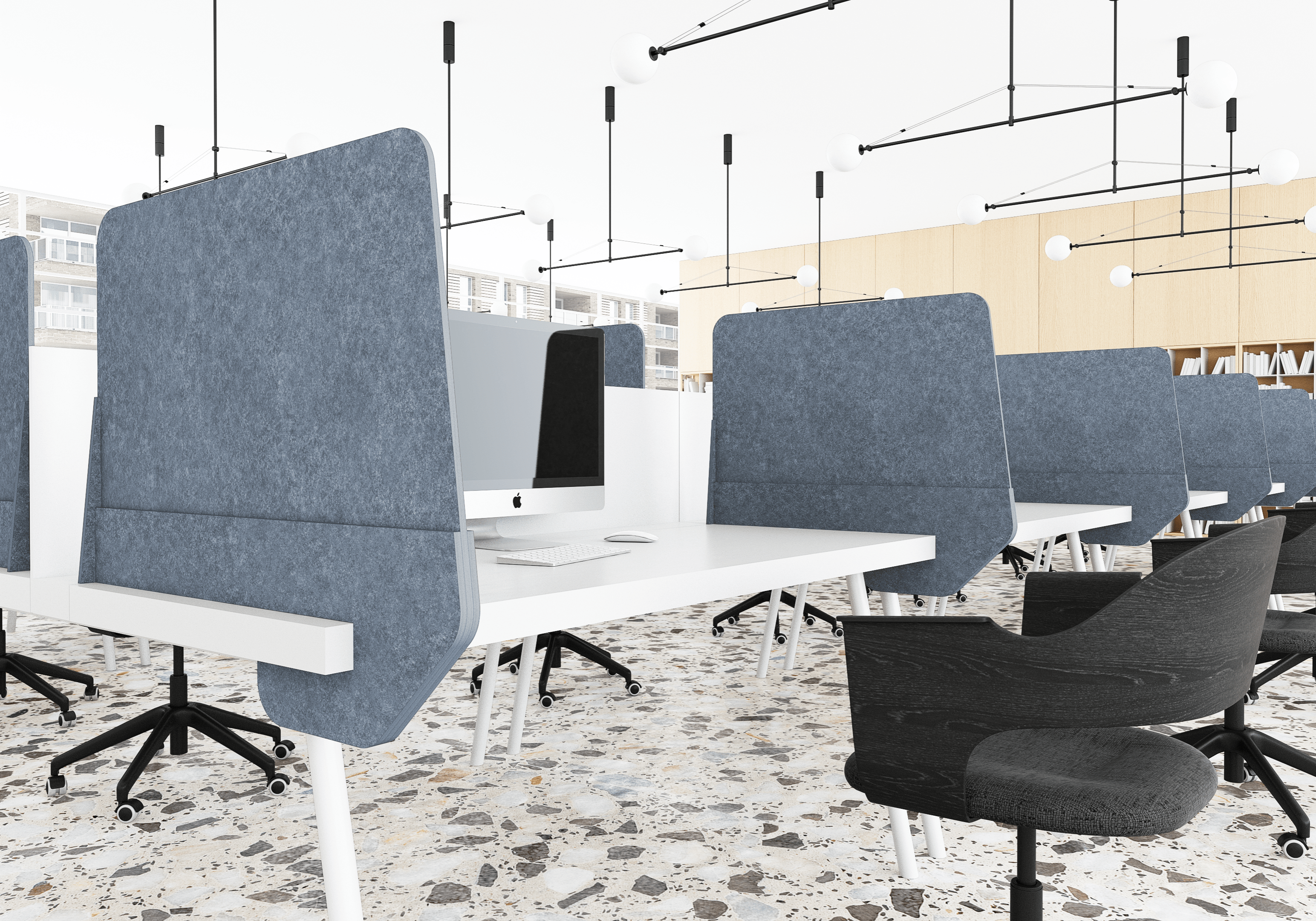4 Common Acoustic Challenges
in open-plan spaces and its solutions
According to the surveys, lack of speech privacy is one of the biggest challenges in open-plan offices. In fact, 50% – 60% of employees see it as predominant frustration in the workplace, making it not a conducive environment for employees. Not only that, but researchers also found out that the productivity of employees reduces due to noise distraction, and it doubled up in an open plan office rather than the private offices. With thorough space design planning, there are so many ways to mitigate noise in the open-plan offices. Let’s take a look at the four common acoustical challenges in open-plan spaces. Plus, the solutions we can apply to solve them.
1. Sound Travels Through Walls
Trying to have a private conversation in an enclosed space, and it feels like your co-workers can still hear every word of your conversation. In the open-plan environment, this situation is inevitable. This may occur many times but is prevalent between workstations and conference rooms or between private offices and conference rooms. Or, for example, a phone booth…that isn’t so private.
Solutions:
- Consider installing acoustic hanging baffles on the ceiling to absorb ambient noise in the open-plan offices.
- Use acoustic panels on walls and desks that have an average NRC rating to prevent sounds from traveling through walls.
Find your ideal acoustic panel that fits your office space with MPS Acoustics featuring the Acoustic panels, dividers, and baffles.
2. Reverberating Sounds and Echoes
One acoustic challenge in larger enclosed spaces like meeting/conference rooms, training rooms, or even classrooms is the reverberation. Sound bounces back and forth on hard surfaces and to avoid this, install sound absorbent materials to help dampen the noise inside the space.
Solutions:
- Use acoustic materials on the ceiling or add acoustic panels, baffles, and clouds.
- Consider mounting sound-absorbing panels on the walls that look like artwork in enclosed spaces – adding a functional art, such as the Rumur wall panels that also has a sound-absorbing function.
3. Too Much Noise in Open Plan Spaces
Too much noise is one of the common challenges in open-plan spaces. People working and collaborating create sounds, and other sounds inside the office increase the noise. Thus, making the employees feel stressed results in lost productivity due to a lack of focus. Noise costs you and your organization money without you even knowing it. There are many ways to avoid these costs:
Solutions:
- Consider adding a quiet zone for people that need time to focus. Ideally, with both visual and acoustic privacy built into the design.
- Provide areas where collaboration and socializing are encouraged, such as meeting and conference rooms. Put sound-absorbing clouds on the ceiling and mount or hang acoustic panels on walls in these areas.
- Install a smart sound masking system, such as VoiceArrest. Advanced sound masking technology will help increase productivity in your workspace by reducing noisy distractions and providing opportunities for privacy and focus.
A comfortable office positively impacts employee mood, drive, and performance.
4. Lack of Visual Privacy
Another problem encountered in open-plan spaces is the lack of visual privacy among employees. Imagine you are intently working at your station, and are interrupted by co-workers walking past your desk, making you lose your attention on your work. This is an example of the many visual distractions in the workplace, which significantly impact employee productivity. Every minute of distraction costs your business money and decreases productivity.

Solutions:
- Add acoustic panels that serve as partitions between the workstations of each employee.
- Put easy to install desk partitions for open-plan offices that will help employees focus on their work
Does your office experience any of those four acoustical challenges mentioned above? This is the time to take action. Talk to an acoustic expert today. Contact MPS Acoustics now!
